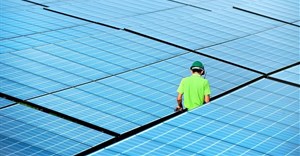Can AfCFTA solve Africa's energy challenge?

These include:
- The Noor Solar Complex in Morocco;
- The rehabilitation of the Cahora Bassa hydro powerplant in Mozambique;
- A €620m wind farm with 365 turbines in northern Kenya;
- and the Batoka Gorge Hydroelectric power project between Zambia and Zimbabwe.
All these energy projects have an intra-African connection. For instance, the Cahora Bassa plant exports a significant amount of its production to South Africa, Botswana and Zambia. The African Development Bank served as lead arranger for €436m in senior credit facilities towards the Kenyan wind farm’s cost of €623m. The Batoka Gorge Hydroelectric power station is expected to generate 2,400 MW of electricity to be shared equally between Zambia and Zimbabwe.
Intra-African investment in the age of AfCFTA
The African Continental Free Trade Area agreement (AfCFTA), launched on March 21, 2018, creates the largest free trade area in the world and is designed to create a single market for goods and services across the continent. It aims to boost intra-African trade by 52% by 2020, and the removal of non-tariff barriers will make it more attractive to invest in African economies.
The trade agreement guarantees potential investors access to information, as parties to the agreement must publish their laws, regulations, procedures and administrative rulings of general application as well as any other commitments under an international agreement relating to any trade matter covered by the agreement. It is hoped that publishing this information will make the interstate market conditions more transparent and appealing.
Part III of the Protocol on Goods provides for liberalisation of trade, which looks at aspects such as import duties, general elimination of quantitative restrictions, export duties, elimination of non-tariff barriers and rules of origin; all of which are aimed at making it easier and cheaper to trade goods and services, including energy, within Africa.
Under the AfCFTA, expanded markets and free movement of labour, goods, services, capital and people should promote economic diversification, structural transformation, technological development and quality job creation. The full implementation of the AfCFTA will eliminate all tariffs and will be a game-changer for energy producers across the continent, creating a knock-on impact in multiple sectors of the economy.
The AfCFTA has been signed by 54 out of 55 AU member states, with only Eritrea yet to join. Gabon and Equatorial Guinea recently deposited their instruments of ratification, bringing the number of countries that have ratified the agreement to 27.
There is an undisputed link between global economic growth and energy demand. To grow and prosper, African nations will need more reliable and affordable energy. Free trade and strong investment protections support energy security by encouraging access to diverse energy supplies and production sufficient to meet growing demand. Trade policies and protections also enable effective supply chains and the efficient movement of capital, people, information and all products.
The free flow of commerce is essential to maximising global economic growth and prosperity, and even has implications for national security. By enabling energy supplies to flow more smoothly between nations, the AFCFTA will, in theory at least, make is possible for suppliers to meet the energy need efficiently and affordably.
Opening Africa for African investors
But there are several obstacles to the AfCFTA’s success. Key among them is the fact that critical parts of the agreement have yet to be finalised before countries commence trading under the AfCFTA on July 1, 2020. These outstanding sections include details on schedules of tariff concessions and services commitments, and policies around investment, intellectual property and competition. Until these sections are concluded and the AfCTA is truly fully operational, investors may likely find that they have to trade on pre-AfCTA terms.
Investment promotion and protection strengthen successful regional integration arrangements. However, unlike the common practice of protecting foreign investments by building investment protective rights into investment treaties and agreements, the AfCFTA does not guarantee individual investors any rights as regards their investments. This means that while it will be easier to get into a country to trade, an investor must look to multilateral or bilateral agreements that coexist with the AfCTA, such as the Investment Agreement for Comesa Common Investment Area and the ECOWAS Supplementary Act on Investments, for investment protection.
AfCFTA opens Africa up to African investors. Its potential to change Africa by making energy cheaper is remarkable but its promise of continental success comes with the risk of investing without inbuilt investor protections. While trade in the AfCFTA age will be easy and bring benefits aplenty for both investors and consumers, investors will still have to look outside of AfCFTA for protection against unlawful state action.
About Rodwyn Peterson
Rodwyn Peterson, head of litigation Chibesakunda & Co, DLA Piper Africa member firm in ZambiaRelated
AfCFTA’s primary task must be to boost intra-African exports to levels experienced by other global trading blocs 4 Oct 2024 Afreximbank Q1 2024: Resilience amid challenges, income surges 20 May 2024 No more business-as-usual in African capital markets 22 Mar 2024 South Africa celebrates first AfCFTA export to Ghana amidst global trade disruptions 28 Feb 2024























